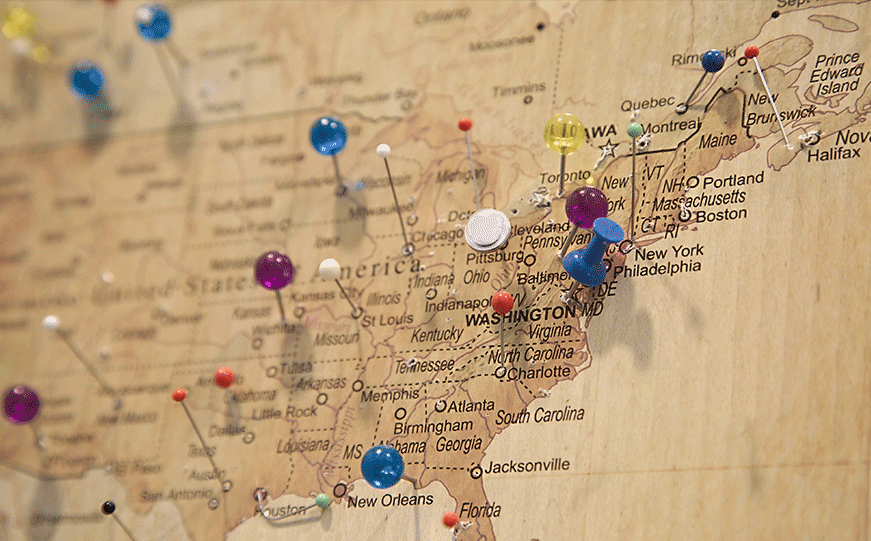America is a vast country with many different traditions, topographies and weather patterns. As such, taste in building products can vary greatly from region to region based on local habits, climates and available resources. Building product makers can capitalize on these regional differences by paying close attention to local trends.
Here are a few building product trends that are ‘hot’ right now in different parts of the country:
Pacific Northwest – Mass Timber Construction
A lot is happening in the world of mass timber construction, particularly in the Pacific Northwest where timber is one of the major industries (it’s where the Portland Timbers soccer team get its name). Engineered wood buildings have emerged as an attractive alternative to steel and concrete construction, due to wood’s abundance, sustainability and lower transportation costs. Compared to concrete buildings, mass timber buildings are about one-fifth of the weight, require 90 percent less construction traffic, and are 25 percent faster to construct due to the fact that mass timber panels can be prefabricated offsite. Portland’s Radiator Building, a 38,000-square-foot building completed in 2014, was the first all-timber building of its scale in the country. Recent changes in the International Building Code (IBC) have paved the way for tall mass timber buildings up to 18-stories tall starting in 2021, so expect to see more of this type of construction.
West – Low Profile Rooftop Solar Systems
The West Coast has been leading the residential solar revolution through legislation and incentives encouraging homeowners and builders to adopt rooftop solar. Just this year, the state of California enacted a law mandating that all new homes have solar panels, making it the first state in the country to do so. Low-profile solar shingle and tile systems, which lay flat and integrate into existing roof systems, have become a popular alternative to traditional rack-mounted systems that are bulkier and less subtle. Some homeowners’ association groups prohibit rack-mounted solar systems for aesthetic reasons, so low-profile solar roofing systems may offer a more visually appealing option as states continue to adopt pro-solar legislation.
Midwest – SBS-Modified Asphalt Roofing
“Hail Alley,” a vertical stretch of the Midwest spanning from Northern Texas to the Dakotas, experiences the most frequent and severe hail storms in the country. In the spring and summer, hailstones can pile so high on the streets that snow plows are necessary. It’s not unheard of for homeowners living in Hail Alley to have to replace or repair their roofs multiples times a year due to frequent hail impacts. Many homeowners are opting for SBS (styrene-butadiene-styrene)-modified asphalt shingles, which are essentially asphalt shingles augmented with a type of rubber to make them more flexible and impact-resistant. Hail bigger than an inch in size can do serious damage to roof systems, so more homeowners in the Midwest are turning to this engineered alternative to traditional shingles.
South and Northeast – Cool Roofing
Cool roofing – solar-reflective roofing that lowers rooftop temperatures and associated air conditioning costs – has become very popular in areas of the country where heat is a problem. This includes the South, where humidity combined with high temperatures can make life unbearable during the summer months; as well as the Northeast, where the urban heat islands are in full effect due to denser cities with an abundance of conductive materials (e.g.. concrete, metal and asphalt). Cool roofing in the form of flat, white top roofs has been popular in commercial settings for some time, but more recently, residential building product manufacturers have created solar reflective asphalt shingles in dynamic colors, including darker shades like gray and black. Cool roof technology can also be applied to metal roofing, offering energy savings, passive home-readiness and longevity benefits.
Homeowners living in different areas of the country often have very different needs. Responding to those differences with innovative products designed to address specific regional challenges is one way building products makers can set themselves apart in an increasingly competitive marketplace.




